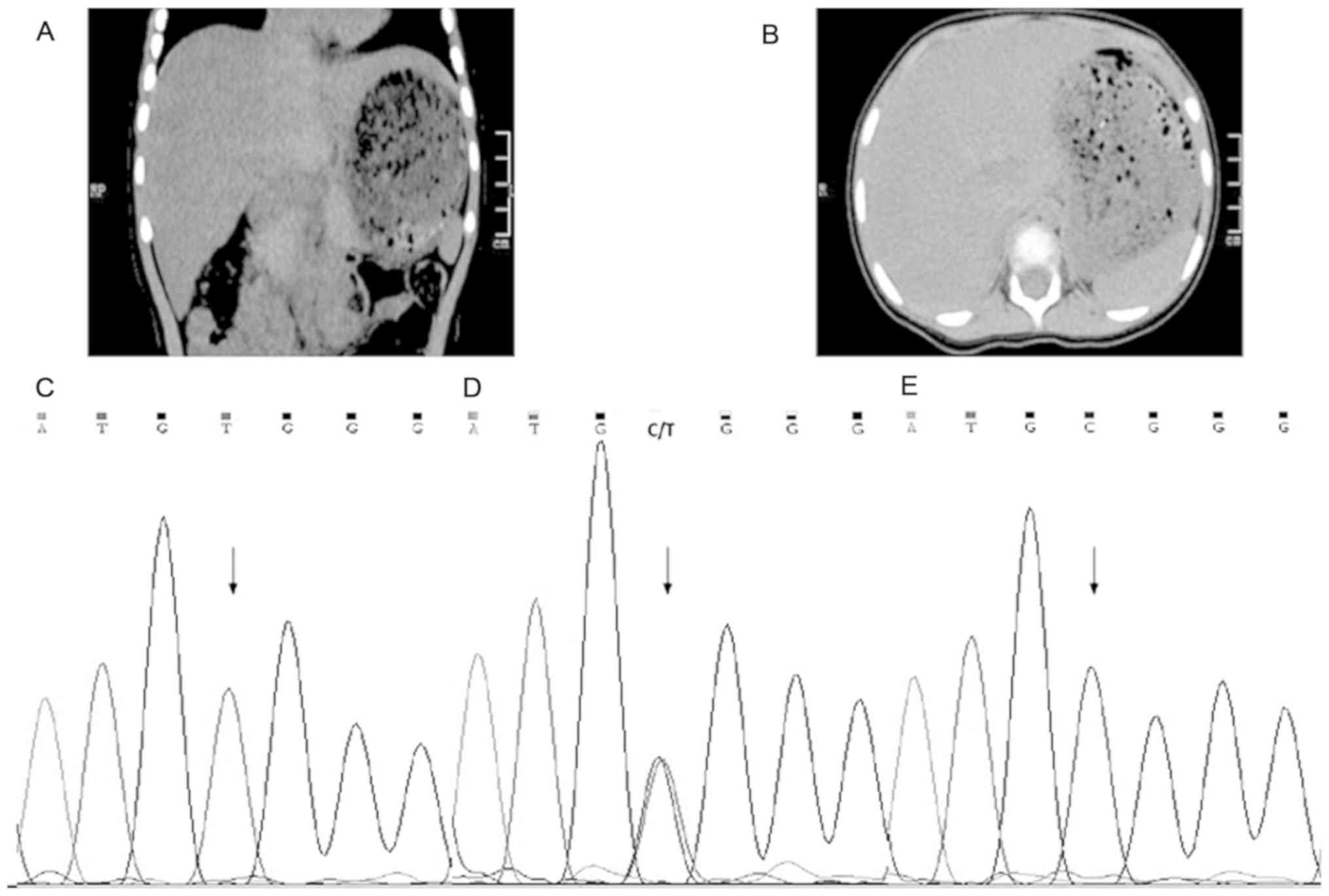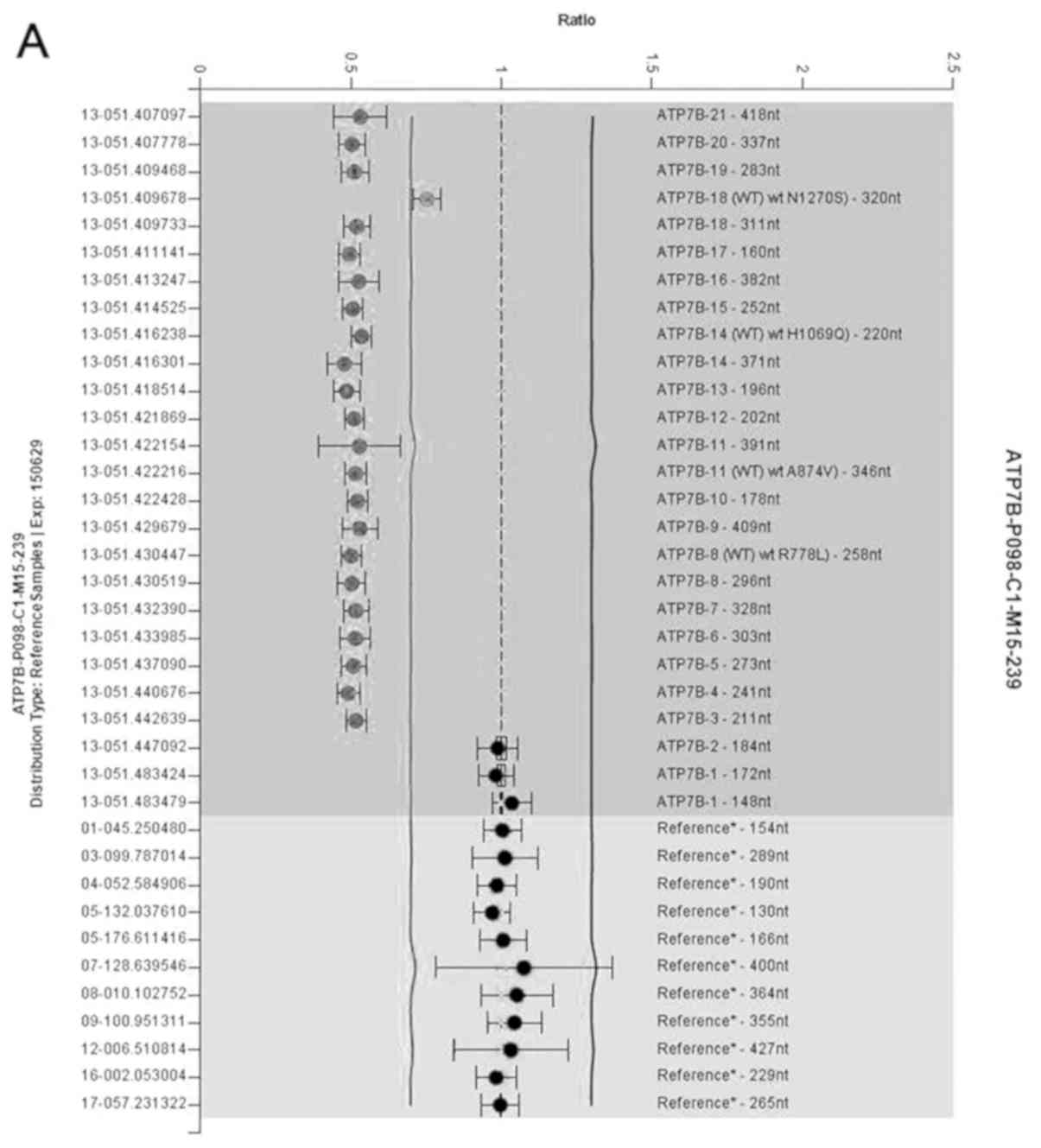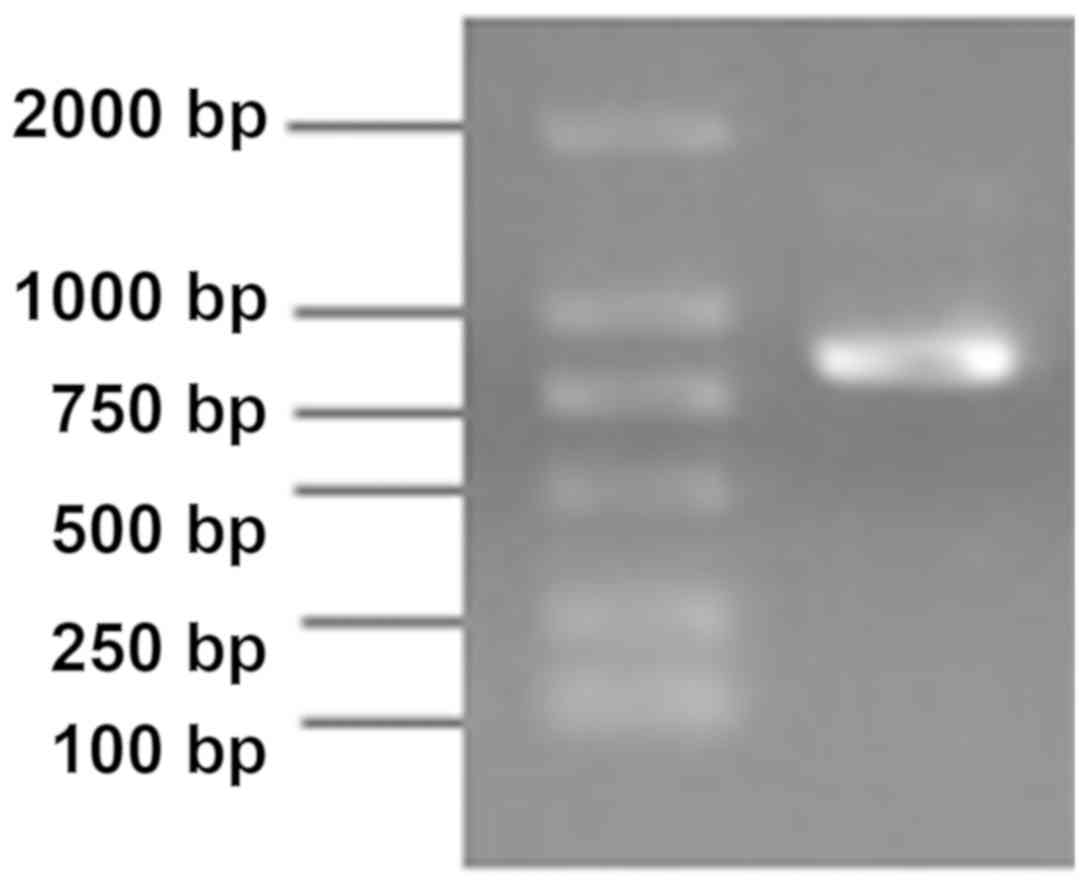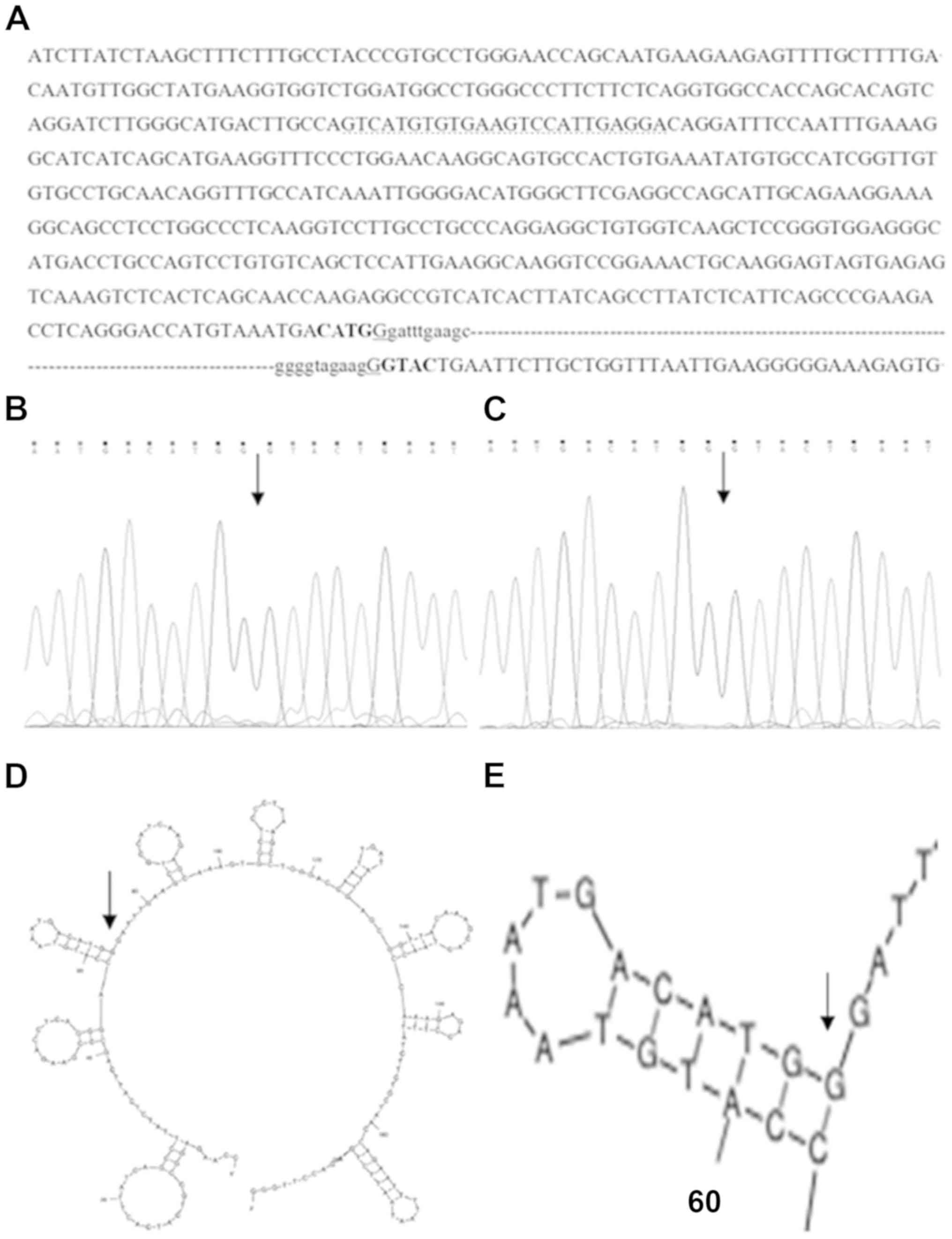|
1
|
Danks DM: Disorders of copper transport.
The metabolic basis of inherited diseases. Scriver CR, Beaudet AL,
Sly WS and Valle D: 1. 6th. McGraw-Hill; New York, NY: pp.
1416–1422. 1989
|
|
2
|
Scheinberg IH and Sternlieb I: Wilson
disease. Major Problems in Internal Medicine. Lloyd H and Smith J:
Saunders; Philadelphia, PA: 1984
|
|
3
|
Sternlieb I: Perspectives on Wilson's
disease. Hepatology. 12:1234–1239. 1990. View Article : Google Scholar : PubMed/NCBI
|
|
4
|
Petrukhin K, Fischer SG, Pirastu M, Tanzi
RE, Chernov I, Devoto M, Brzustowicz LM, Cayanis E, Vitale E and
Russo JJ: Mapping, cloning and genetic characterization of the
region containing the Wilson disease gene. Nat Genet. 5:338–343.
1993. View Article : Google Scholar : PubMed/NCBI
|
|
5
|
Terada K, Schilsky ML, Miura N and
Sugiyama T: ATP7B (WND) protein. Int J Biochem Cell Biol.
30:1063–1067. 1998. View Article : Google Scholar : PubMed/NCBI
|
|
6
|
Thomas GR, Forbes JR, Roberts EA, Walshe
JM and Cox DW: The Wilson disease gene: Spectrum of mutations and
their consequences. Nat. Genet. 9:210–217. 1995. View Article : Google Scholar : PubMed/NCBI
|
|
7
|
Piekarski J, Goldberg HI, Royal SA, Axel L
and Moss AA: Difference between liver and spleen CT numbers in the
normal adult: Its usefulness in predicting the presence of diffuse
liver disease. Radiology. 137:727–729. 1980. View Article : Google Scholar : PubMed/NCBI
|
|
8
|
Loudianos G, Dessì V, Lovicu M, Angius A,
Nurchi A, Sturniolo GC, Marcellini M, Zancan L, Bragetti P, Akar N,
et al: Further delineation of the molecular pathology of wilson
disease in the mediterranean population. Hum Mutat. 12:89–94. 1998.
View Article : Google Scholar : PubMed/NCBI
|
|
9
|
Subramanian I, Vanek ZF and Bronstein JM:
Diagnosis and treatment of Wilson's disease. Curr Neurol Neurosci
Rep. 2:317–323. 2002. View Article : Google Scholar : PubMed/NCBI
|
|
10
|
Medici V, Rossaro L and Sturniolo GC:
Wilson disease-A practical approach to diagnosis, treatment and
follow-up. Dig Liver Dis. 39:601–609. 2007. View Article : Google Scholar : PubMed/NCBI
|
|
11
|
Das SK and Ray K: Wilson's disease: An
update. Nat Clin Pract Neurol. 2:482–493. 2006. View Article : Google Scholar : PubMed/NCBI
|
|
12
|
Brewer GJ and Askari FK: Wilson's disease:
Clinical management and therapy. J Hepatol. 42 (Suppl):S13–S21.
2005. View Article : Google Scholar : PubMed/NCBI
|
|
13
|
Hedera P: Update on the clinical
management of Wilson's disease. Appl Clin Genet. 10:9–19. 2017.
View Article : Google Scholar : PubMed/NCBI
|
|
14
|
Mak CM and Lam CW: Diagnosis of Wilson's
disease: A comprehensive review. Crit Rev Clin Lab Sci. 45:263–290.
2008. View Article : Google Scholar : PubMed/NCBI
|
|
15
|
Dalvi A and Padmanaban M: Wilson's
disease: Etiology, diagnosis, and treatment. Dis Mon. 60:450–459.
2014. View Article : Google Scholar : PubMed/NCBI
|
|
16
|
Ferenci P: Regional distribution of
mutations of the ATP7B gene in patients with Wilson disease: Impact
on genetic testing. Hum Genet. 120:151–159. 2006. View Article : Google Scholar : PubMed/NCBI
|
|
17
|
Shah AB, Chernov I, Zhang HT, Ross BM, Das
K, Lutsenko S, Parano E, Pavone L, Evgrafov O, Ivanova-Smolenskaya
IA, et al: Identification and analysis of mutations in the Wilson
disease gene (ATP7B): Population frequencies, genotype-phenotype
correlation, and functional analyses. Am J Hum Genet. 61:317–328.
1997. View
Article : Google Scholar : PubMed/NCBI
|
|
18
|
Liu XQ, Zhang YF, Liu TT, Hsiao KJ, Zhang
JM, Gu XF, Bao KR, Yu LH and Wang MX: Correlation of ATP7B genotype
with phenotype in Chinese patients with Wilson disease. World J
Gastroenterol. 10:590–593. 2004. View Article : Google Scholar : PubMed/NCBI
|
|
19
|
Kim EK, Yoo OJ, Song KY, Yoo HW, Choi SY,
Cho SW and Hahn SH: Identification of three novel mutations and a
high frequency of the Arg778Leu mutation in Korean patients with
Wilson disease. Hum Mutat. 11:275–278. 1998. View Article : Google Scholar : PubMed/NCBI
|
|
20
|
Okada T, Shiono Y, Hayashi H, Satoh H,
Sawada T, Suzuki A, Takeda Y, Yano M, Michitaka K, Onji M and
Mabuchi H: Mutational analysis of ATP7B and genotype-phenotype
correlation in Japanese with Wilson's disease. Hum Mutat.
15:454–462. 2000. View Article : Google Scholar : PubMed/NCBI
|
|
21
|
Incollu S, Lepori MB, Zappu A, Dessì V,
Noli MC, Mameli E, Iorio R, Rannuci G, Cao A and Loudianos G: DNA
and RNA studies for molecular characterization of a gross deletion
detected in homozygosity intheNH2-terminal region of the ATP7B gene
in a Wilson disease patient. Mol Cell Probes. 25:195–198. 2011.
View Article : Google Scholar : PubMed/NCBI
|
|
22
|
Tatsumi Y, Shinohara T, Imoto M, Wakusawa
S, Yano M, Hayashi K, Hattori A, Hayashi H, Shimizu A, Ichiki T, et
al: Potential of the international scoring system for the diagnosis
of Wilson disease to differentiate Japanese patients who need
anti-copper treatment. Hepatol Res. 41:887–896. 2011. View Article : Google Scholar : PubMed/NCBI
|
|
23
|
Møller LB, Ott P, Lund C and Horn N:
Homozygosity for a gross partial gene deletion of the C-terminal
end of ATP7B in a Wilson patient with hepatic and no neurological
manifestations. Am J Med Genet A. 138:340–343. 2005. View Article : Google Scholar : PubMed/NCBI
|
|
24
|
Todorov T, Balakrishnan P, Savov A, Socha
P and Schmidt HH: Intragenic deletions in ATP7B as an unusual
molecular genetics mechanism of Wilson's disease pathogenesis. PLoS
One. 11:e01683722016. View Article : Google Scholar : PubMed/NCBI
|
|
25
|
Liu G, Ma D, Cheng J, Zhang J, Luo C, Sun
Y, Hu P, Wang Y, Jiang T and Xu Z: Identification and
characterization of a novel 43-bp deletion mutation of the ATP7B
gene in a Chinese patient with Wilson's disease: A case report. BMC
Med Genet. 19:612018. View Article : Google Scholar : PubMed/NCBI
|
|
26
|
Chen YC, Yu H, Wang RM, Xie JJ, Ni W,
Zhang Y, Dong Y and Wu ZY: Contribution of intragenic deletions to
mutation spectrum in Chinese patients with Wilson's disease and
possible mechanism underlying ATP7B gross deletions. Parkinsonism
Relat Disord. 62:128–133. 2019. View Article : Google Scholar : PubMed/NCBI
|
|
27
|
Mameli E, Lepori MB, Chiappe F, Ranucci G,
Di Dato F, Iorio R and Loudianos G: Wilson's disease caused by
alternative splicing and Alu exonization due to a homozygous
3039-bp deletion spanning from intron 1 to exon 2 of the ATP7B
gene. Gene. 569:276–279. 2015. View Article : Google Scholar : PubMed/NCBI
|


















